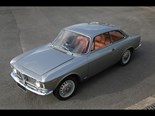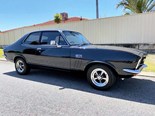Project Mustang giveaway
 Project Mustang giveaway
Project Mustang giveaway

 Project Mustang giveaway
Project Mustang giveaway

 Project Mustang giveaway
Project Mustang giveaway

 Project Mustang giveaway
Project Mustang giveaway

 Project Mustang giveaway
Project Mustang giveaway

 Project Mustang giveaway
Project Mustang giveaway

 Project Mustang giveaway
Project Mustang giveaway

 Project Mustang giveaway
Project Mustang giveaway

 Project Mustang giveaway
Project Mustang giveaway

 Project Mustang giveaway
Project Mustang giveaway

 Project Mustang giveaway
Project Mustang giveaway

 Project Mustang giveaway
Project Mustang giveaway

 Project Mustang giveaway
Project Mustang giveaway

 Project Mustang giveaway
Project Mustang giveaway

 Project Mustang giveaway
Project Mustang giveaway

 Project Mustang giveaway
Project Mustang giveaway

 Project Mustang giveaway
Project Mustang giveaway

 Project Mustang giveaway
Project Mustang giveaway

 Project Mustang giveaway
Project Mustang giveaway

 Project Mustang giveaway
Project Mustang giveaway

 Project Mustang giveaway
Project Mustang giveaway

 Project Mustang giveaway
Project Mustang giveaway

 Project Mustang giveaway
Project Mustang giveaway


|
|
Project Mustang giveaway
|

|
|
Project Mustang giveaway
|

|
|
Project Mustang giveaway
|

|
|
Project Mustang giveaway
|

|
|
Project Mustang giveaway
|

|
|
Project Mustang giveaway
|

|
|
Project Mustang giveaway
|

|
|
Project Mustang giveaway
|

|
|
Project Mustang giveaway
|

|
|
Project Mustang giveaway
|

|
|
Project Mustang giveaway
|

|
|
Project Mustang giveaway
|

|
|
Project Mustang giveaway
|

|
|
Project Mustang giveaway
|

|
|
Project Mustang giveaway
|

|
|
Project Mustang giveaway
|

|
|
Project Mustang giveaway
|

|
|
Project Mustang giveaway
|

|
|
Project Mustang giveaway
|

|
|
Project Mustang giveaway
|

|
|
Project Mustang giveaway
|

|
|
Project Mustang giveaway
|

|
|
Project Mustang giveaway
|
We've spent a year restoring and playing with project Mustang and now we're giving it to you. Here's the story so far

|
|
Project Mustang giveaway
|
PROJECT MUSTANG GIVEAWAY
Like the look of it? The little white monster you see on these pages has been a long time in the making, with the story starting over a year ago on the other side of the Pacific. Some bright spark decided it would be nice to pick up a Mustang and turn it into a project car. That would be Uncle Phil, our resident car wrangler and all-round good guy.
So what did Phil buy? We soon became the proud owners of a D-Code ’64-and-a-half coupe. It was a reasonably tidy but tired California car that had a lady owner (no, really!) for the last 12 years. Under the bonnet was the much under-rated 289-cube V8 (good for 210 horses) and an auto ’box.
Mechanically sound, it had a few rust spots and, realistically, you could have given it a tidy-up and driven it the way it was. But where’s the fun in that? So we sent it to the Philippines for a little holiday.
There’s an Aussie-owned business over there called Classic Speed that specialises in restoring Mustangs and we decided to give them a go. Phil had seen their work and was impressed.
Located at the old Clark Air Base north of Manila, near the city of Angeles, Classic Speed’s 80 local employees work out of a giant warehouse that’s more than a little reminiscent of a 60s shed, albeit with some modern fittings. It’s got quite an atmosphere.
The company set up there because it’s a tax-free zone and has ready access to a local English-speaking workforce.
Classic Speed is geared up to restore about 50 cars a year, which works out to about a nine month turn-around from the day you place an order to the time you find yourself plonked in the driver’s seat and turning the key.
The approach can vary. One customer brought in a scale-model car he fancied and asked to crew to build him a full-sized version. For most, the process is a little more step-by-step.
"They reserve the donor car, then work through the build sheet and six or seven pages of options," said Classic Speed owner Haydn Baldwin.
"There are different build sheets for different model cars. Sometimes it’s quite minor, like electric boot release, but it also includes wheels, gauges, engine – quite a few choices when you get into it. That’s a process people enjoy because now they’re designing their own car."
So what about our example? Even by Uncle Phil’s standards, he’d cracked an absolute pearl. The only rot anyone could find was a 20 cent-sized spot behind the right front guard.
A big factor in the strip-down was that we wanted to convert it to right-hand drive. Done properly for maximum strength, that’s more than a cosmetic fix.
Step one was to dismantle the machine, media-blast it and set it up on custom-built jigs. These are critical for ensuring the body doesn’t end up with an unintentional twist, which in turn could make reassembly and final set-up an absolute nightmare.
"We’ve got cars that are 50 years old and parts that come from all over the world," Haydn said, "so if, for example, you’ve got a GT350 and you’re ordering a new panel from overseas, you’ll spend the next flaming week trying to get the thing to align properly."
This is when any conversion to right-hand drive is tackled. In a Mustang, this involves a significant rebuild of the dash support panel, which is a structural component. Later in the process, the car is fitted with an updated rack-and-pinion steering set-up, which is more precise than the recirculating-ball original.
In some cases, you’ll see replacement floor panels going in at this point, where the originals are too far gone. Ours were fine and just received a clean-up.
Not surprisingly, the original wiring loom is consigned to the bin and replaced with one of Classic Speed’s own design. Made by a company called Harness Master – also based at Clark – they run a nylon outer braid and Deutsch waterproof connectors. It’s pretty much a plug-and-play design that can be installed quickly.
When it came to thinking about what we’d plonk in the engine bay, we encountered the same dilemma faced by every restorer. It’s sorely tempting to give the engine a quick top-end rebuild and plonk it back in. Do it right and you end up with a very nice cruiser that would run for another decade.
The thing is, there is so much you can do to these cars. The choice of parts and upgrades out there is seemingly endless; the only limitations are the size of your wallet and the level of your insanity.
Classic Speed has had plenty of time to think these things through and has come up with three basic engine packages based around seasoned blocks: a 302 with around 415hp (309kW) at the crank, plus two variants of a 351 Windsor, with 415 or 555 neddies (414kW). All three are supplied by Blueprint Engines out of the US.
"You end up with a more robust and longer-lasting product," said Baldwin. "These engines have got the best of everything in them: steel crank, roller cam and valvetrain, plus hypereutectic pistons."
The powerplants are delivered complete, pretty much ready to start. Classic Speed installs them, fills up the requisite fluids and tests them on the in-house dyno.
Of course, you can throw lots of bling at the engine bay, but there is one major choice to be made – fuelling. Classic Speed offers the option of injection or a Holley carburettor. There’s no doubt injection will give a more sophisticated drive that’s easier on fuel, but there’s also something to be said for the simplicity of a carburettor. We’re simple folk at heart and went for a Holley 600 with an electric choke.
That’s mated to the 302 engine (stroked to 347), delivered pretty much as a finished package from Blueprint and hooked up to an MSD solid-state ignition, using a vacuum advance.
"We retain a vacuum advance for good off-idle acceleration without hesitation," said Baldwin. "It’s a maintenance-free system that extends spark-plug life and is hands-down better than the old one."
Sitting behind that lot is a clutch (with hydraulic actuation) from McLeod Racing, mated to a five-speed Tremec TKO manual transmission, which has a reputation for being robust, with a nice tight shift pattern.
A new shaft from Driveshaft Specialist – another US supplier – links to a 3.89:1 ratio nine-inch limited-slip diff from Strange Engineering.
So we’ve got plenty of power to do the job, and a way of getting it to the ground, but what about stopping?
We’ve gone for 11-inch discs and four-piston Wilwood calipers all round. It’s a simple and straightfoward set-up, with vastly superior power and feel than the original drums.
Gone, too, is much of the 60s steering and suspension.
We’ve plumped for a package made by Total Control, which includes a power rack-and-pinion unit, coils up front, leaf rear springs and premium dampers that are adjustable for compression and rebound rates.
With the loud end sorted, it was time to turn our attention to the cabin. For the dash, we’ve gone for a six-gauge set-up that includes speedo, tacho, fuel, oil pressure, voltmeter and water temp. The look is set off with a classic three-spoke wood-rim steering wheel.
Noise is a big issue for Classic Speed, so most of the cabin received two layers of sound-proofing.
As for seating, the default trim for these cars is black leather, though you can order pretty much whatever you want. Uncle Phil wanted nice grippy seats, so the crew ordered a pair of Scat units, stripped off the original covers and replaced them with leather to match the rear bench.
Speaking of Phil, he was also involved in the design of the new gearshift, a solid rod made from polished stainless steel. It’s been set specifically so the driver can reach it a lot easier than the stock item, even when they’re firmly strapped in.
With the addition of power windows, a decent air-conditioner and a slick sound system, we’ve ended up with something that feels exceptional. It’s pretty luxurious.
We’ve had some inevitable teething troubles with the machine – not surprising when you tackle a restoration on this scale – but nothing that proved to be insurmountable.
With those issues sorted, it was time to take it down to the recent Geelong Revival for a run on the foreshore.
Young John Bowe was handed the keys to see what it would do down the standing quarter and came back with a very respectable time of 13.2 seconds.
So we’re pretty damned happy. But not as happy as one of you lucky sods will be because now we’re going to give it away – look for the details in this issue.
BUYING A MUSTANG FOR RESTORATION
If you're in the hunt for your own resto project Mustang, by far the most important component to check out is the body. A bad one can easily run up hundreds of hours in labour, which will make it uneconomical.
Driveline and interior components are relatively cheap and in plentiful supply, so your imagination and wallet will be the only limiting factors.
Keep in mind, though, that it’s often cheaper to buy one that’s already been done.
FAST FACTS
PROJECT MUSTANG
Engine: 302 V8 stroked to 347ci (5.7 litres)
Power: 309kW
Torque: 542Nm
Weight: 1200kg
Gearbox: 5-speed manual
Brakes: Wilwood discs (f/r)
Top Speed: 220km/h
Value: $80K
Unique Cars magazine Value Guides
Sell your car for free right here
Get your monthly fix of news, reviews and stories on the greatest cars and minds in the automotive world.
Subscribe

.jpg)











